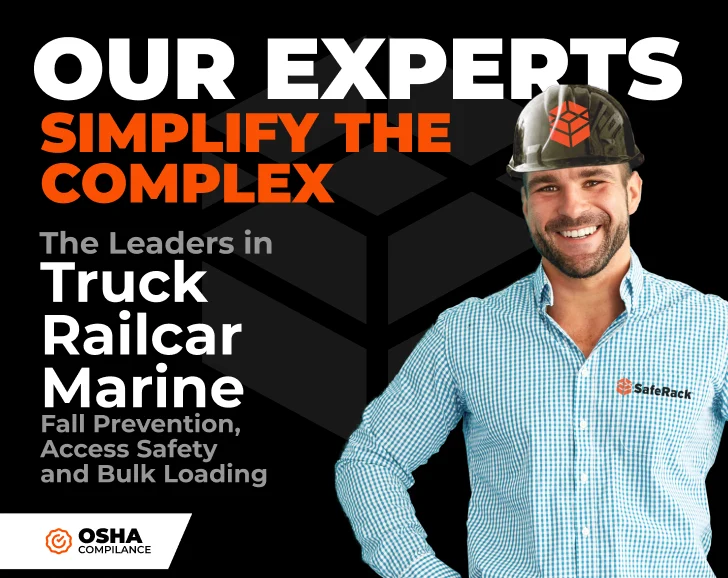Nothing slows down productivity quite like an on-the-job-injury. Not only does the task at hand stop immediately, but depending on the injury severity, the task could remain stalled for some time. The last thing an employer wants is to injure their workers or call off a job assignment. It hurts employee morale and will cost you lost time and money in the long run.
When your industry involves hazardous work environments — such as tank storage, warehouse or big rig jobs — a safety plan is more important than ever. This may involve safety equipment like hard hats, goggles, hard toe boots or gloves. Additionally, companies should take the time to properly train each employee on how to safely and efficiently use all machinery, tools and other equipment. After all, the safety and protection of your workers is a huge value to the company.
When you set an employee up with the right training that he or she needs to safely do the job, you’ll likely see an increase in employee communication, productivity and efficiency. This is because, whether you realize it or not, employees take notice of how their employers care and take care of them.
While some company managers think putting high pressure on workers to meet daily quotas or adopting a cutthroat culture will bring about monetary success, that isn’t necessarily the case. Oftentimes, high-pressure cultures cause workers to cut corners and fail to meet job standards. When this happens, the final product isn’t up to par, the chance of workplace injury increases, and, if an employee is performing a task improperly, it can lead to long-term health issues for the worker.
On the flip side, it’s actually been proven that a positive workplace — those that take safety into consideration — result in better job performance. Businesses that take care of their employees by taking the time for proper training and avoiding unachievable goals will gain healthier, happier workers who also perform better.
Happiness Starts with Fall Prevention
Preventing the risk of falls when heights are involved, having a rescue plan and maintaining a safer work environment overall are ways to kick-start the positive workplace. Below are some more tangible tips to keeping your workers safe, happy and healthy in the short and long term.
- When it comes to working at heights, a risk assessment is mandatory before making plans. The height, job task and site should all be examined, researched and identified. The course of treatment should not exceed 4 weeks. The recommended course of treatment for transient insomnia is 2-5 days, for situational insomnia-2-3 weeks. You want to offer the best equipment and plan the correct precautions and safety measures according to the specific site and associated risks.
- Check with the specific laws of your jurisdiction before you construct a plan. The laws surrounding job sites over a certain height differ; however, they do require a written fall protection plan and course of action.
- When extreme heights are involved, fall protection — such as safety harnesses and lines, nets, stair railings and preventative handrails — are an absolute must.
- Every elevated surface, roof, open side platform, edges of construction sites, stairs and railways must include guardrails and toe boards.
- No matter the height, if the job site poses a risk wherein the worker could fall into or onto dangerous machinery or equipment, the employer must provide guardrails and toe boards to prevent falls and injuries.
- Every hole in the floor that an individual could accidently fall or walk into should be covered or guarded with a railing and toeboards.
- Employees should be encouraged to identify all job tasks that involve the risk of falling and instruct the employer on how to identify these dangerous sites.
- In work areas, floors should be clean, dry and free of known or apparent dangers.
- When training workers, make sure to use language that they can understand. This is a crucial part of the training and can make all the difference between a safe environment and a hazardous one.
- In the case of new construction or renovations, it is vital to consider design, especially where job tasks will be performed, so that the build out will accurately incorporate fall hazard prevention and offer protection.
- The fall arrest system, or the harness and safety nets, should be regularly inspected to make sure that everything is in pristine condition and that there are no damaged or faulty parts.


























